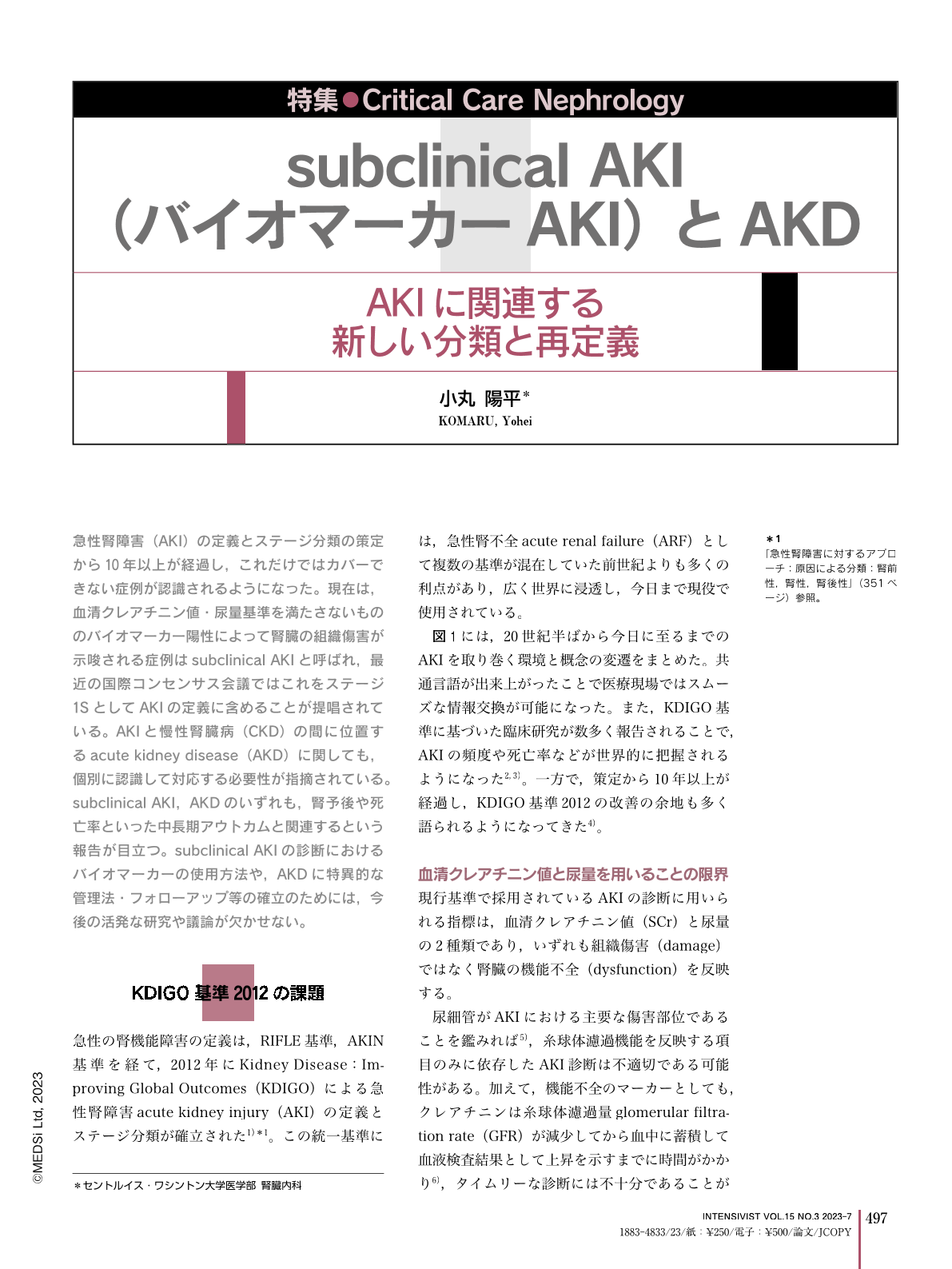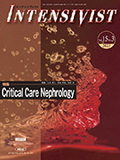Japanese
English
- 有料閲覧
- Abstract 文献概要
- 1ページ目 Look Inside
- 参考文献 Reference
- サイト内被引用 Cited by
急性腎障害(AKI)の定義とステージ分類の策定から10年以上が経過し,これだけではカバーできない症例が認識されるようになった。現在は,血清クレアチニン値・尿量基準を満たさないもののバイオマーカー陽性によって腎臓の組織傷害が示唆される症例はsubclinical AKIと呼ばれ,最近の国際コンセンサス会議ではこれをステージ1SとしてAKIの定義に含めることが提唱されている。AKIと慢性腎臓病(CKD)の間に位置するacute kidney disease(AKD)に関しても,個別に認識して対応する必要性が指摘されている。subclinical AKI,AKDのいずれも,腎予後や死亡率といった中長期アウトカムと関連するという報告が目立つ。subclinical AKIの診断におけるバイオマーカーの使用方法や,AKDに特異的な管理法・フォローアップ等の確立のためには,今後の活発な研究や議論が欠かせない。
More than a decade has passed since the unveiling of the current definition and staging guideline for acute kidney injury (AKI). Since then, several novel concepts and sub-phenotypes of AKI have emerged to address some limitations of the original definition. AKI biomarkers, which potentially reflect structural kidney damage, have facilitated the recognition of subclinical AKI, wherein a patient tests positive for the biomarkers but does not meet the serum creatinine or urine output criteria of AKI. The Acute Disease Quality Initiative (ADQI) recently published a recommendation to introduce the concept of subclinical AKI as stage 1S of AKI. Furthermore, the gap between AKI and chronic kidney disease (CKD) is now being defined as acute kidney disease (AKD), which occurs between 7 and 90 days after initial damage to the kidney. The clinical observations that both subclinical AKI and AKD are significantly associated with important renal and mortality outcomes warrant the identification of these entities in clinical settings. Future efforts should focus on optimizing diagnostic and management strategies for subclinical AKI and AKD.

Copyright © 2023, MEDICAL SCIENCES INTERNATIONAL, LTD. All rights reserved.


